Nisshinbo Micro Devices Released the NA2200 and the NA2202/03/04, the Latest Models in its Lineup of AFE ICs for Sensors
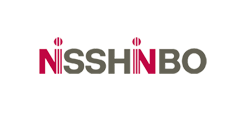
Nisshinbo Micro Devices released the NA2200 and the NA2202/03/04, the latest models in its lineup of analog front-end (AFE) ICs for sensors. They integrate the features that satisfy all needs related to AFE ICs for sensors in the industrial equipment market.
ADCs/AFEs from Nisshinbo Micro Devices whose History Spans over 10 Years
Nisshinbo packs all the features required for sensor AFE ICs in the industrial equipment market, and yet they are very small in size.
In 2024, Nisshinbo Micro Devices significantly boosted its product lineup of sensor AFE ICs for industrial equipment. The company plans to introduce new models and expand the scale of its sensor AFE IC business globally.
Nisshinbo Micro Devices is an analog semiconductor company established in 2022 as a result of the business integration of New Japan Radio Co., Ltd. and RICOH Electronic Devices Co., Ltd. The main products of the company are power supply ICs for operational amplifiers, New Japan Radio's specialty, and regulators, RICOH Electronic Devices' specialty, and not many people know that they also develop AFE ICs.
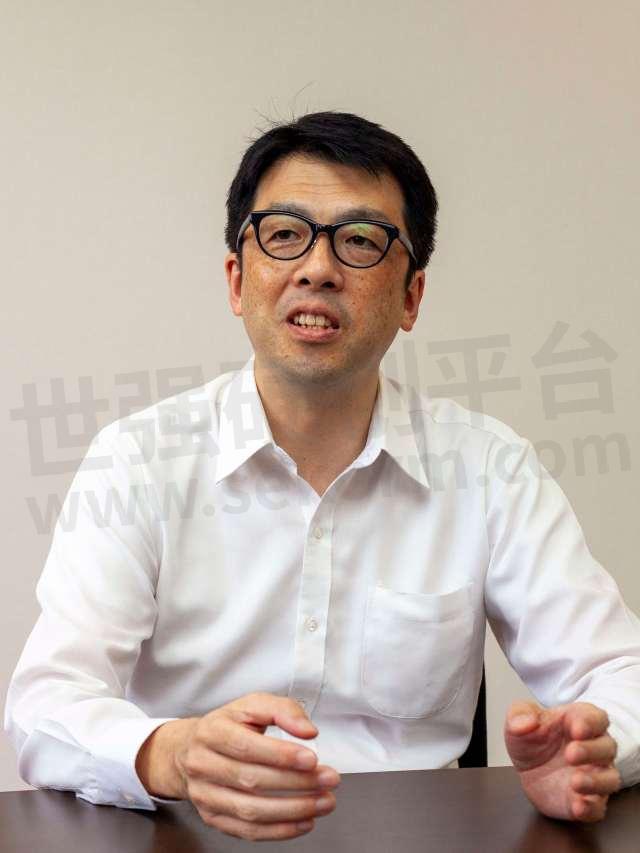
Norio Obuchi
The history of AFE ICs from Nisshinbo Micro Devices dates back to around 2010. At that time, New Japan Radio began developing A/D converters (ADCs) on the strength of its analog circuit technology that it had acquired from making operational amplifiers and other devices. Around 2016 they developed 16-bit resolution ΔΣ-type ADC technology. Looking back, Norio Obuchi, Advanced Assistant Manager of Product Marketing Department at Sales & Marketing Division, says, "Along with operational amplifiers, ADCs are essential for analog signal processing, and we rushed to develop them in order to meet the growing demand for sensors." However, they did not release any ADC products using proprietary technology. "It would not be easy for us, a latecomer to this game, to gain significant market share with standalone ADC products. From the very start, our intention was to commercialize ADCs as AFE ICs in combination with operational amplifiers and filters," he said, and in 2016, they began developing AFE ICs.
Developing AFE ICs for the Custom-made Market
AFE ICs are devices positioned between different kinds of sensors and microcontrollers (MCUs). The minute analog signals output by sensors are amplified and converted into digital signals by an ADC and then finally processed into signals for the microcontroller to read and output. In the past, it was common to have a discrete configuration in which the AFE circuit was made up of separate ICs: an operational amplifier for amplification, a circuit for gain and offset calibration, and an ADC for A/D conversion. However, AFE ICs have been introduced that integrate operational amplifiers, ADCs, and signal processing circuits in order to reduce size and simplify the design. AFE ICs are becoming increasingly popular in a wide range of applications, including industrial equipment that rely on a large number of sensors, consumer devices, and in-vehicle equipment.
The AFE ICs released by former New Japan Radio in 2016-2017, which had just developed the ADC core, did not simply integrate the features of operational amplifiers and ADCs but were also designed for ease of use. The ICs came equipped with a feature that allowed gain adjustment and offset correction by sending a single command from a microcontroller via the SPI. The NJU9103 AFE IC released in 2017 was equipped with a programmable gain amplifier (PGA) with a maximum gain of 512 times, the largest in the class of AFE ICs with a resolution of 16 bits and sampling speeds between 0.814ksps and a maximum of 6.51ksps (hereinafter referred to as 1ksps), which made it suitable for use as an AFE for temperature sensors, pressure sensors, and flow sensors. "When the gain multiplier increases, errors are amplified; therefore, the need for offset correction increases as well. Until then, gain adjustments and offset corrections were often performed by external components, which added size and labor. Which is why, with the NJU9103 and other models, we made command setting possible from the microcontroller," says Obuchi.
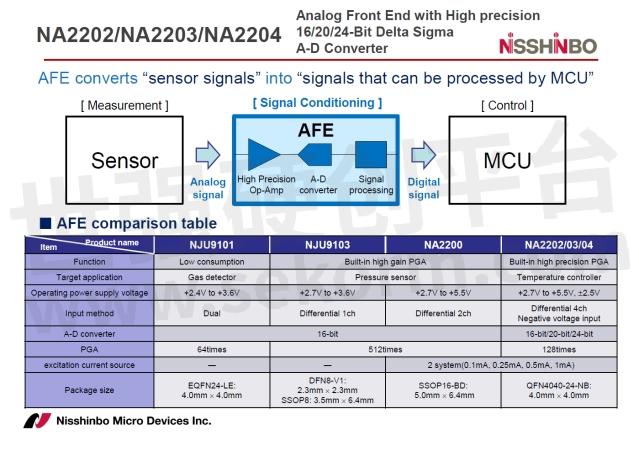
The image of AFE IC and the main AFE IC products of Nisshinbo Micro Devices (Source: Nisshinbo Micro Devices)
The high-gain, easy-to-use NJU9103 was widely adopted in the fields of industrial and consumer equipment, but following the releases in 2016-2017, New Japan Radio/Nisshinbo Micro Devices did not release any AFE ICs until 2024.
"More than five years have passed since the release of the NJU9103, but that does not mean we stopped developing AFE ICs. We mostly focused on custom-made AFE ICs based on the NJU9103 to meet the needs of specific customers," explains Obuchi.
But then, adds Obuchi, "As a general-purpose product, we decided to market an AFE IC that would satisfy all the requirements for AFEs in industrial equipment that we had encountered through our custom-made business," leading to the release of the new NA2200 AFE IC in 2024, the first in about seven years.
The NA2200 Meets the Needs of Temperature Sensors
The NA2200 is an AFE IC with a resolution of 16 bits and a sampling speed of 1ksps (0.814ksps to a maximum of 6.51ksps) just like the NJU9103. "The NJU9103 was compatible with a power supply voltage of 3V, but this model supports a 5V power supply, which is strongly in demand in the industrial equipment market," says Obuchi. Like the NJU9103, it makes offset correction and gain adjustment possible through a single command, and it has many features that are needed in industrial equipment. Typical new features include excitation current supply and communication error detection.

Overview of NA2200 (Source: Nisshinbo Micro Devices)
One of the main applications of AFE ICs in this class is temperature control. Usually a three-wire resistance temperature detector (RTD) using platinum (Pt100) is connected as a sensor. Because of its structure, a Pt100 RTD requires a current of 1 mA to be supplied for excitation. "The AFE has two excitation current sources built in and is equipped with a feature that can supply any constant current," says Obuchi. This eliminates the need for an external current source, which was required in previous models. The built-in excitation current sources can supply 0.1mA, 0.25mA, and 0.5mA in addition to 1mA for the Pt100, and is compatible with other sensors, such as the Pt1000.
Temperature controllers are often used in high-temperature environments and are exposed to strong noise when used in the industrial equipment for which the NA2200 is designed. The possibility of errors occurring in communication between the AFE IC and the microcontroller because of noise cannot be ruled out. For this reason, the NA2200 is equipped with a communication error detection feature that adds error check bytes like the CRC8 and checksum to the output data, allowing the microcontroller to easily detect communication errors.
The NA2202/03/04 Models are Definitive Sensor AFEs in the 1KSPS Class
Nisshinbo Micro Devices also released three AFE IC models: the NA2202, the NA2203, and the NA2204. The NA2202/03/04 include additional features compared to the NA2200 and can be considered the definitive sensor AFEs in the 1ksps class.
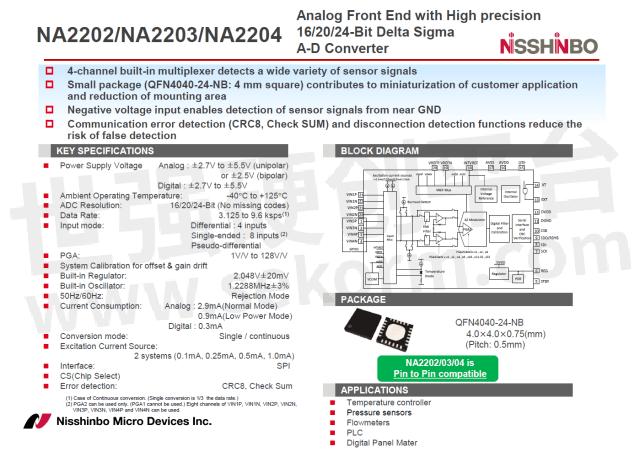
Overview of NA2202/03/04 (Source: Nisshinbo Micro Devices)
The difference between the three models is the resolution of the ADC. The NA2204 achieves 24-bit resolution with the newly developed ADC core. The NA2203 is a 20-bit resolution model, and the NA2202 is a 16-bit resolution model. All three models use a 4.0 x 4.0 x 0.7mm QFN4040-24-NB package and are pin-compatible.
The NA2202/03/04 models also feature the single command offset correction and gain adjustment feature, excitation current supply, and communication error detection. In addition to a power supply voltage range of 2.7 to 5.5V, the analog section supports ±2.5V as well as negative voltage input.
Compared to the NA2200, which has two differential inputs (four inputs when using single-ended input), the new models have four differential inputs (eight inputs when using single-ended input), thus doubling the number of sensors that can be connected. "We accommodated the increasing need to connect multiple types of sensors, such RTDs and pressure sensors, by increasing the number of inputs," explains Obuchi.
The NA2202/03/04 models also come with a commercial power frequency noise removal feature and a disconnection detection feature. The commercial power frequency noise removal feature uses a digital filter to remove noise from commercial power sources around the world with frequencies of 50Hz or 60Hz. While this feature is not required for devices that operate on batteries, Obuchi says that it is essential for devices that use commercial power, and incorporating it into the AFE IC makes it possible to miniaturize the system and reduce the amount of work that goes into it.
Obuchi explains, "We decided to include a wire-break detection feature, which is useful for detecting internal wire breaks in sensors like thermocouples or incorrectly installed sensors, given the growing need, since installing multiple sensors is becoming more and more common."
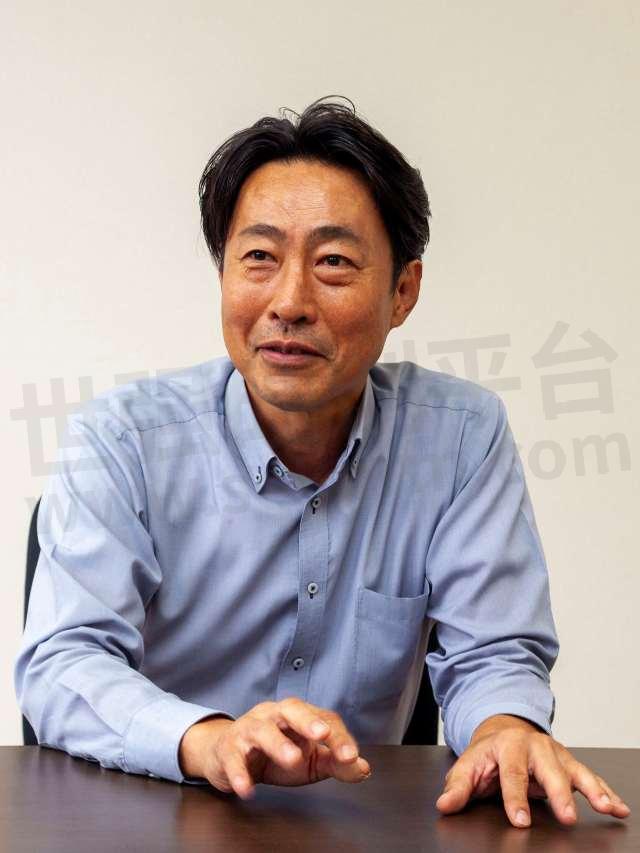
Izuru Kaneko
Kaneko Izuru of the Sales & Marketing Management Department at the Sales & Marketing Division stresses that, "None of the new features added to the NA2200 and NA2202/03/04 models are truly revolutionary features that can be touted as world firsts, and many AFE ICs already include some of those features. However, very few AFE ICs have all of them. Once users of industrial equipment try a certain feature, the demand increases for AFE ICs with the same feature in successive models, so we commercialized this AFE IC to precisely meet that demand."
Kaneko adds, "The NA2202/03/04 showcases the unique capabilities of Nisshinbo Micro Devices in that it packs many features and yet fits into an ultra-compact 4mm square package."
An Enhanced Development Environment to Support A Global Offensive
As part of the initiatives by Nisshinbo Micro Devices to boost the sales of its AFE ICs worldwide, evaluation boards are being made available to facilitate evaluation of the NA2200, NA2202/03/04, and NJU9103 models. Each evaluation board consists of an AFE IC-equipped board (grandchild board) and an I/O expansion board (child board) to which can be connected an AFE IC-equipped board and a variety of different microcontroller boards and sensors. Sets of grandchild boards, child boards, and microcontroller boards (by STM32F411RE/STMicroelectronics) are being loaned out free of charge.
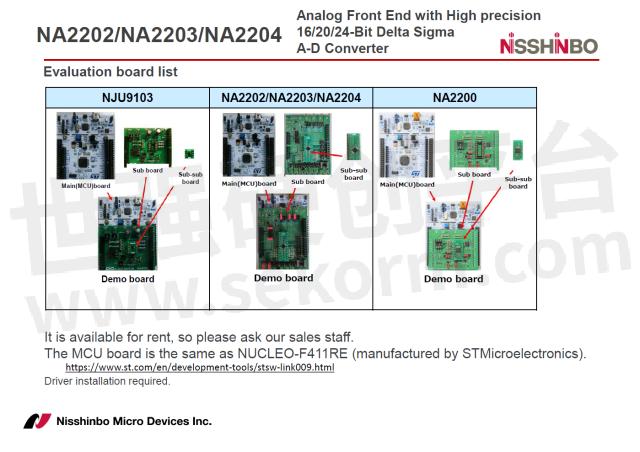
Evaluation boards of NA2200, NA2202/03/04 (Source: Nisshinbo Micro Devices)
Development software for setting constants like gain adjustment and offset correction is also being distributed free of charge to those who have been loaned evaluation boards. The software is a block diagram-style GUI (Graphical User Interface: development software) with circuit symbols of PGA and ADC, which allow for intuitive operation and setting.
While boosting sales of its AFE ICs both domestically and overseas by providing evaluation boards and development software, as well as through other promotional initiatives, Obuchi reports that Nisshinbo Micro Devices is also developing AFE ICs with even faster sampling speeds to meet an ever wider range of AFE IC-related needs.
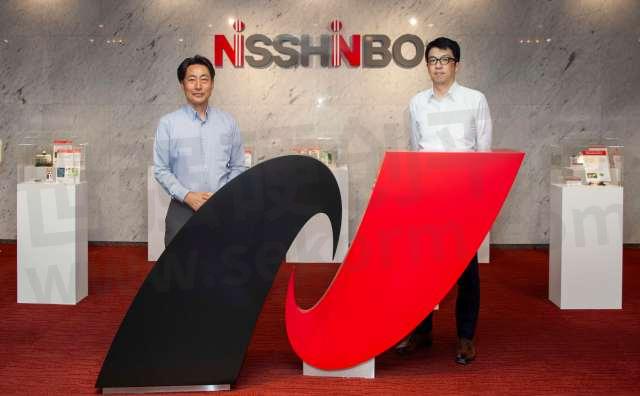
- +1 Like
- Add to Favorites
Recommend
- New Release of Nisshinbo NA2200, 5V Analog Front End with High-Gain PGA
- Nisshinbo Launched Development of First MUSES-Series High-sound-quality Power Management IC
- NISSHINBO‘s 600nA Low Quiescent Current Boost DC/DC Converter for Energy Harvester
- Visit Nisshinbo at 2024 IEEE MTT-S International Microwave Symposium at June 18 through June 21, 2024
- NISSHINBO Launched 0.5A/1A 6MHz PWM/VFM Step-down DC/DC Converter RP539 Series with Synchronous Rectifier
- Started Solution Business Using “Odor Sensing Platform“, Nisshinbo Signed Joint Development Agreement with Ainos and Taiwan Inabata Sangyo
- Now Available: Nisshinbo NL8802,a Low Noise, Dual, High-Quality Sound Audio Operational Amplifier
- Nisshinbo and KIT Have Started the Development of Radio Frequency Rectifier IC Focused on Microwave Wireless Power Transfer Systems
This document is provided by Sekorm Platform for VIP exclusive service. The copyright is owned by Sekorm. Without authorization, any medias, websites or individual are not allowed to reprint. When authorizing the reprint, the link of www.sekorm.com must be indicated.





























































































































































































































































































































































































































































































































































































































































































































































































































































































